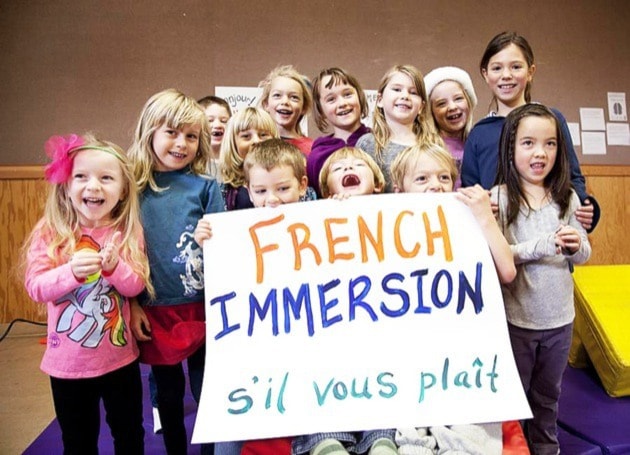Almost one in 10 Prince Rupert students are on track to be bilingual when they grow up.
A record number of students were enrolled in French immersion last year in the Prince Rupert school district (SD52), including a record number of kindergarten students (29), a report outlined last week by Canadian Parents for French – British Columbia and Yukon.
In total, 197 students took French immersion in the public school system in 2015-16, out of a total 2,072 students in the district – a 9.5 percentage of the student body.
Association des Francophones et Francophiles du Nord-Ouest (AFFNO) executive director Patrick Witwicki is not surprised by the statistic considering strong work done by both AFFNO and Canadian Parents for French (CPF) in the area.
“It’s been a collaboration that has worked well between Canadian Parents for French here and us,” said Witwicki, adding that AFFNO got involved with CPF after CPF was experiencing difficulty in finding members to join the board three to four years ago.
“Two years ago, with the arrival of families and young families in town looking for opportunities for their children, it led to a resurgence with the board of CPF and new members, and it also in turn led to more students being enrolled at the elementary school level in French immersion.”
The executive director stated that, when compared to other school districts across the northwest, Prince Rupert is a beacon of light for the immersion program, which has always had support from current and past school boards even when the Rupert population was dwindling years ago.
“It’s been a real nice breath of fresh air to be in a school district where the support for French immersion is there,” said Witwicki.
District principal of French programs and CPF member Andree Michaud echoed Witwicki’s sentiments on the district’s support for the program, one that has a very high reputation among teachers, parents and even the students.
“There’s a bit of a friendship happening. One thing that’s unique about the French immersion program is there is a bit of security attached to it, because the kids that start in kindergarten – the kids that are in that class will be in the same class when they’re graduating in Grade 12,” she said.
Approximately 5,000 Francophones live in the northwest region of Haida Gwaii, Prince Rupert, Terrace, Kitimat, Hazelton and Smithers, AFFNO’s website states.
As common as French has become in the region, Witwicki said AFFNO would like to see students not in French immersion learning both core French and the Coast Tsimshian dialect Sm’algyax, which they can currently choose one to learn in class.
“Hey, your kid’s a sponge. If he/she can learn two languages, then three languages is even better,” he said.
Last year, the grade with the highest number of students in French immersion in Prince Rupert was kindergarten with 29, with at least 10 students involved in every grade, except for Grades 10 and 11, with seven and five enrolled respectively.
As of late last week, 26 students are enrolled in kindergarten in French immersion for 2016-17.
Recruiting challenges
With the program on the rise throughout B.C., SD52 is finding itself in a battle with other school districts to obtain teachers able to speak and teach French.
“Recruiting is hard,” said Michaud.
“Some people prefer big cities like Vancouver. One of the things we have going for us is that the cost of living is a little bit cheaper, but there is a shortage of French teachers in the province, so we’re really competing.”
A supportive district makes a difference, added the principal.
“When we made the transition opening Prince Rupert Middle School [and closing the second high school years ago] we were well-looked after to make sure the program was still viable,” she said.
“Yeah, it comes with a bit of headaches and scheduling headaches especially making sure kids can access courses, and sometimes it’s difficult, but the district is very, very supportive and we’re lucky about that.”
